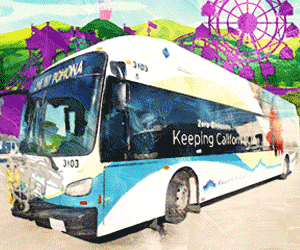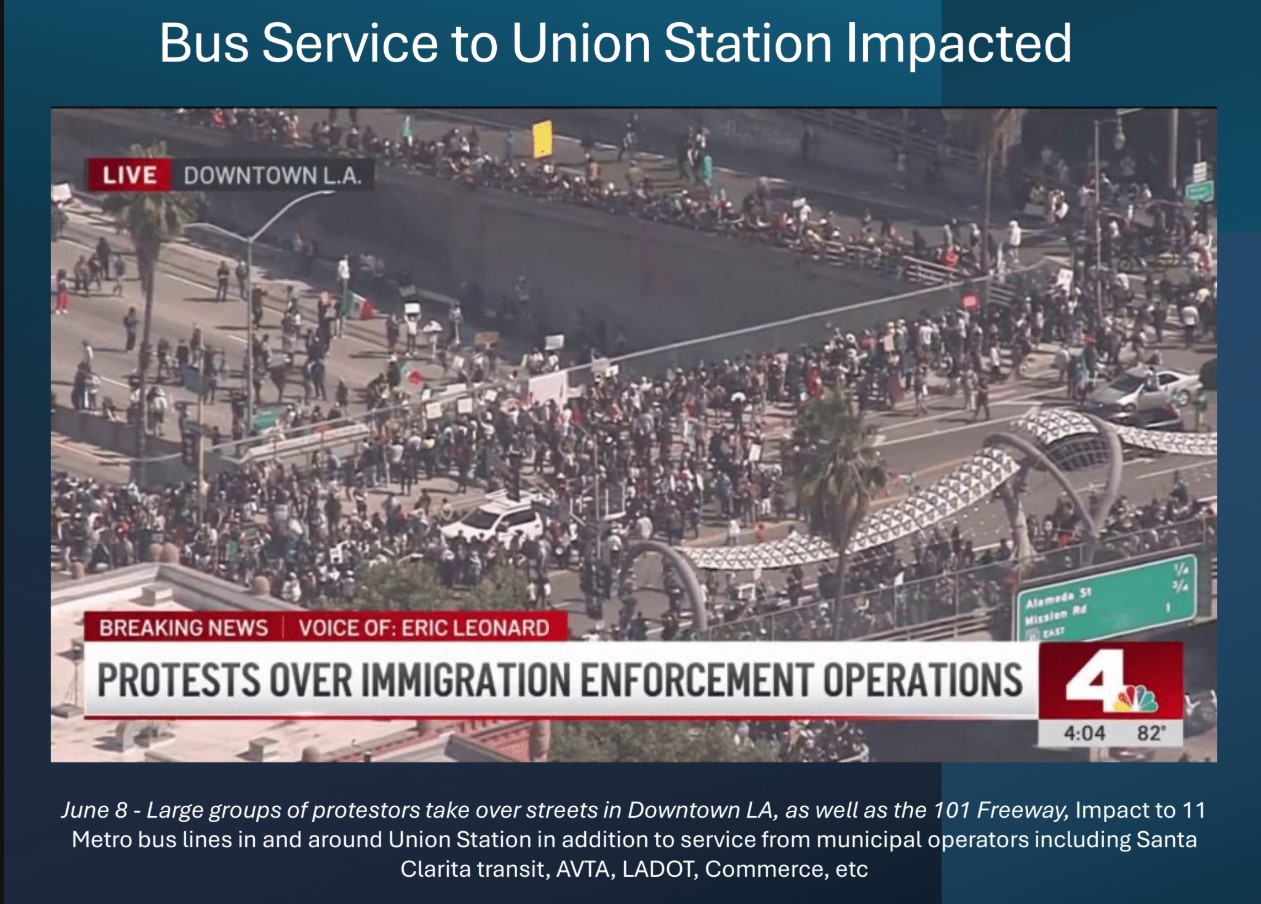At yesterday's board meeting, Metro staff presented ridership and travel time statistics that paint a rather disappointing picture of the A Line. Ridership is down about a third. Average travel times have failed to meet improved schedules.
Metro boardmember and Long Beach Mayor Robert Garcia strongly criticized A Line performance, stating that all the comments he had received had been negative. Garcia stated that he rode the A Line end-to-end last weekend and it took one hour and 20 minutes, though the schedule claims this ride should now take 53 minutes.
The A Line was formerly the Blue Line, traveling 22 miles from from downtown L.A. to downtown Long Beach. It was Metro's first light rail line, opening in 1990. From late January through early November of this year, Metro undertook a $350 million “New Blue” project billed as “modernization” designed to “enhance safety, increase reliability, and improve the customer experience.” During refurbishment, the northern and southern portions of the line were closed for months at a time.
Historically the Blue Line was been Metro's highest ridership light rail line. According to Metro ridership statistics for the last decade, Blue Line ridership peaked in 2012 at 87,943 weekday average riders. For calendar year 2018, the Blue Line averaged 64,648 weekday riders - just above the Expo Line's 61,024 weekday ridership. This calendar year, E Line (former Expo) ridership is now surpassing A Line ridership.
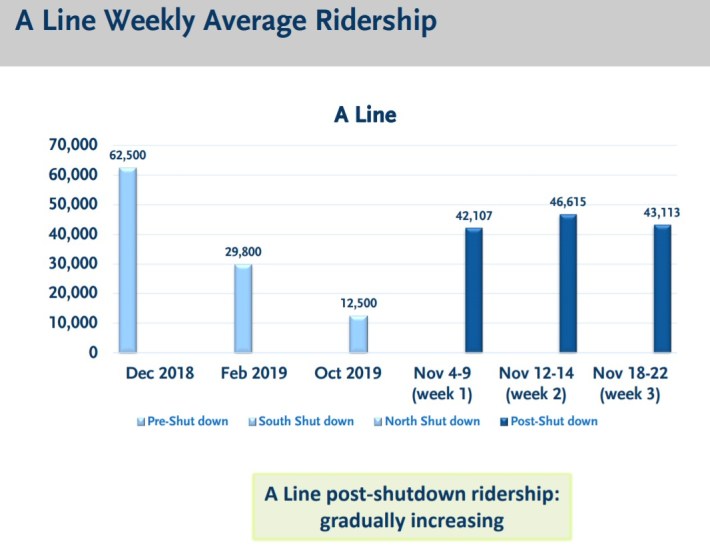
For the first three weeks since the A Line reopened on November 2, weekday ridership has been in the low- to mid-forty-thousands. During those post-refurbishment weeks, ridership dropped by nearly a third (32.0%) from the 2018 average - and is marginally under half (49.9%) of the line's 2012 ridership.
Post-refurbishment, the A Line was supposed to be faster and more reliable.
When all goes well, run times have been slightly faster. But, especially early on, reliability has been awful, with major delay incidents occurring more than once per day. Metro staff acknowledge that more testing was needed before the line was re-opened, which would have allowed the agency to catch and fix problems, including serious power system issues that damaged train pantographs (where trains get power from overhead wires.) Metro's Chief Operations Officer James Gallagher stated that he is "comfortable and confident that we found all of the issues on the overhead system on the A Line." Gallagher related that overhead issues caused car damage, which cascaded into fewer cars available and delays for riders.
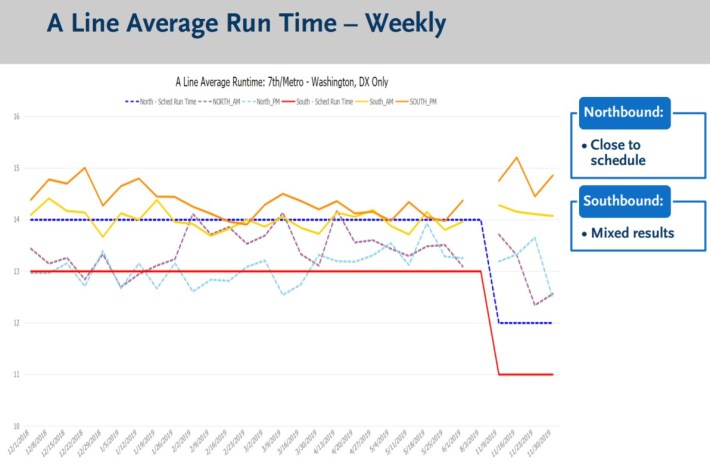
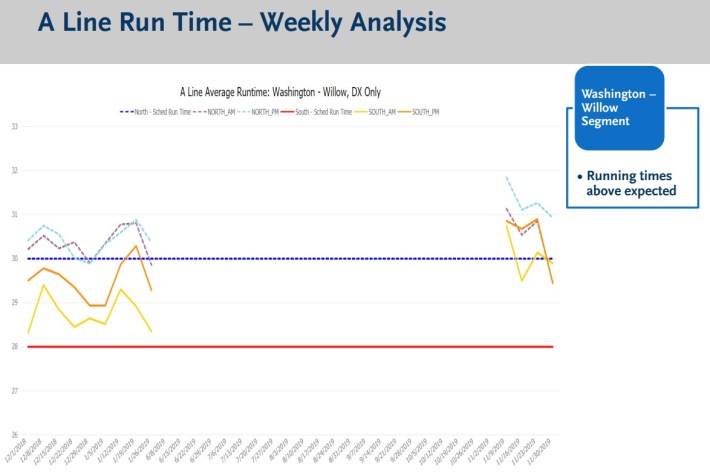
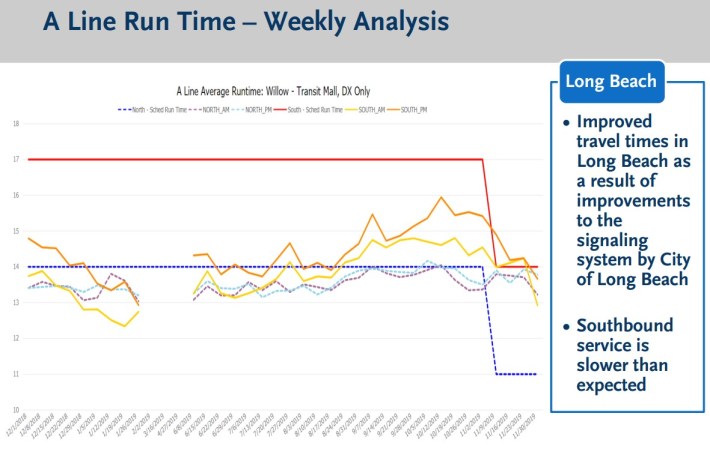
The Metro staff report includes graphs showing pre- and post-refurbishment run times for three geographical stretches. Average times have varied quite a bit, but overall, A Line trains are running 3-6 minutes behind the new A Line schedule, which showed run times five minutes faster than the old Blue Line schedule. Southbound trains perform a bit worse than northbound ones. The best improvements are south of Willow Station where, as part of New Blue, the city of Long Beach implemented signal prioritization.
Metro staff have done a lot of work to resolve A Line issues. Speed and reliability appear to be improving somewhat, but the A Line is not quite yet out of the proverbial woods.
Actual performance appears to undermine Gallagher's statement that "we've had probably a couple weeks of very good [A Line] performance - of the physical system." There have been ongoing mechanical delays this week. Today. Yesterday. The day before. Twice on Tuesday. (Those are just the mechanical delays - not counting occasional unrelated delays due to drivers, pedestrians, police activity, medical emergencies, and weather.)
This is Ridiculous! pic.twitter.com/fzVjN3aCkU
— JDelToro 🐐 ⚾️🐏 🏎 (@JDelToroG) December 6, 2019
Hopefully the current problems will be worked out soon enough to retain existing riders, and, over time, improvements will attract new ridership.



